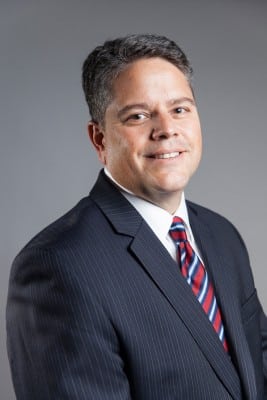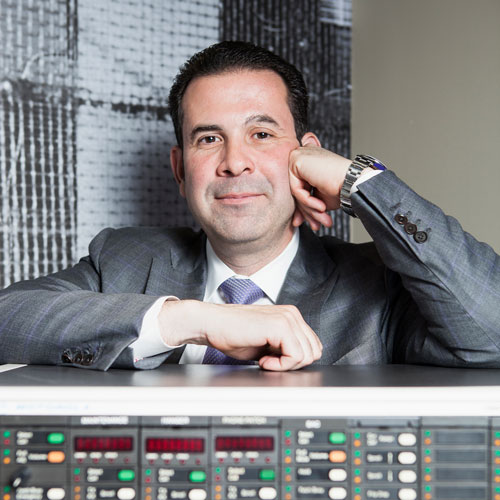
Carlos Cata has his finger on the pulse of marketing. As managing partner of global executive search firm CTPartners, he searches high and low for talent—for clients spanning Fortune 500, midsize, or private equity-backed firms—he interfaces with diverse marketing leaders on a daily basis. And as guest editor of Hispanic Executive’s marketing issue, he connected us with some fascinating article subjects.
Having started his career with multi-brand giants such as Procter & Gamble and Kraft, Cata grasped the dynamics of big business early on. Later, as a business founder in the food industry, he learned how to drive new business forward. That combined experience led to his career as a search exec, matching candidates with companies’ underlying needs, topline goals, and overarching culture.
Here, the Cuban-born Cata takes a look at the new—and old—skill sets demanded by marketing organizations. Hint: Leadership and relationship-building still keep you afloat, but it takes digital savvy to surf the tidal waves.
You came from Cuba in 1968 as a toddler. How has your immigrant experience shaped your story as a professional?
My father instilled in us the classic mantra of education. Hard work, good grades, and an achievement mindset defined me: I graduated magna cum laude from undergraduate, then in the top 10 percent of my MBA.
Even though I’ve worked for big global firms, I very much have an entrepreneurial mindset. I helped start Frontera Foods, a gourmet Mexican foods company.
I feel that lot of Cubans and Latinos have a risk-taking mentality; it’s the ability to bet on yourself. If you don’t know how to do it, you’ll figure it out. It’s an insatiable drive. You never phone it in. You wake up every morning with this paranoia that you’re starting at zero. It’s the fuel that drives you.
Your first job out of business school at Duke was with Kraft Foods in brand management. How has that field evolved over the past couple of decades?
Twenty years ago, brand management was the art of defining consumer insight-driven marketing communications and programs for the mass market. Today, with the advent of the Internet and digital and analytics, there is a shift from mass marketing to personalization.
Before, we spent a lot of time trying to get the product right and the advertising right because we were pushing our content and communications one way. Today, it is a two-way dialogue—it’s intimate. It requires understanding what’s relevant and how trends, mood, and societal factors are impacting almost on a real-time basis.
How are data and analytics changing the marketing landscape?
There are two places where data and analytics live. One is data architecture, data quality, data management, which sits in IT. The CIO’s dimension looks at what data we have, how to manage it, ensure its integrity and quality. Then, as it relates to how to use data and target it, the CMO takes over. This side is about customers, markets, efficient growth strategies. Technology has enabled a much faster, deeper capability in terms of processing mass amounts of transactional information.
What I’m finding is that all top CMOs are staffing their organizations with not only the “historical” market research and insights team, but modelers and analytic or data scientists to harness and bring strategic meaning behind the data.
In that new landscape, what has become the top priority for marketing organizations?
Marketing today is about connecting the dots between raw data to meaningful information to unique insights to an actionable strategy. How do you connect all those dots to ensure you have a seamless integrated customer experience? That’s a big deal right now.
Which skills make marketing executives stand out to recruiters in the current climate?
The classic stuff—strategic marketing acumen, understanding communication, the ability to put together strategy—is still important. Beyond that, I look for an innovation mindset and someone who is extremely tech-savvy. It doesn’t mean you have to be the digital evangelist. You need to know how to manage a team that understands how you connect in the digital ecosystem. Those who stand out understand how to unearth and collect true, unique insight in real time, and how to foster an environment of innovation to bring about a new solution.
It’s also about leadership. Historically, maybe creativity mattered most for a marketer; the “idea leader” reigned the day. But that definition of a marketing guru is gone. Now, it’s a true leader that can cast vision, manage complexity, and integrate a multitude of moving parts to drive the growth strategy.
It sounds like the CMO’s seat has shifted within the C-suite. How so?
CMOs are being tapped more than ever to be the chief growth officer. They are expected to help us define how to drive our growth agenda. For that, they need an insatiable curiosity to see what’s on the landscape. They have to ingest the voice of the customer and market into the company, make sense of it, and develop programs that integrate it in a seamless way. The CMO is an extension of the CEO to help translate market trends and expectations into compelling, relevant strategies to win.
As a recruiter, do you have any go-to tactics to identify whether the candidate will be a match?
I try to focus on their values and what drives them at their core. I like to get a sense of how they set a vision and enable an organization to achieve breakthrough results. I find out how they treat people. How do they manage up, across, and down? I look at relationship-building: how they build and engender relationships, what kind of style they have—authoritative or more collaborative.
That’s what’s critical to the art of what we do: mapping the culture fit. It sounds so cliché, but fit is everything. A lot of executives fail not because they are not smart, strategic, and brilliant; they fail on the soft skills.
Most tips for job applicants target up-and-coming professionals. What’s your advice for seasoned executives navigating the job interview process?
I’m still surprised that even for high executive roles, people don’t prepare for interviews. They think they have a track record of success that speaks for itself. But even for senior executives, it’s important to prepare. Know the company and its values. What’s perhaps more insightful is the need to show your authentic self and be really genuine. That resonates. Corollary to that is showing vulnerability. Everyone is just pitching and selling in the younger crowd. But in the upper ranks, it’s about being true to where you are and who you are, sharing how you failed and how it made you stronger. Vulnerability is a hidden strength if communicated well. Talk about how you built capability, how you developed people. It’s a pivot—less about yourself and more how you’ve created capabilities for others and the organization.
You’ve had the opportunity to interview and engage with some phenomenal businesspeople. What stays with you from those experiences?
I’m more impacted by experiences of the heart—more so than the leadership from the head. When people have shared their personal stories—and in many cases their personal tragedies, how they overcame them, and how that influenced who they became—those are my moments of pure inspiration. When you drill down to the true humanity of someone, that is what inspires me. It makes me leave the room thinking, “I want to be a better person.”
See Carlos Cata’s guest editor commentary on Elisa Padilla, Eduardo Conrado, Paul Asencio, and Chris Montenegro McGrath

